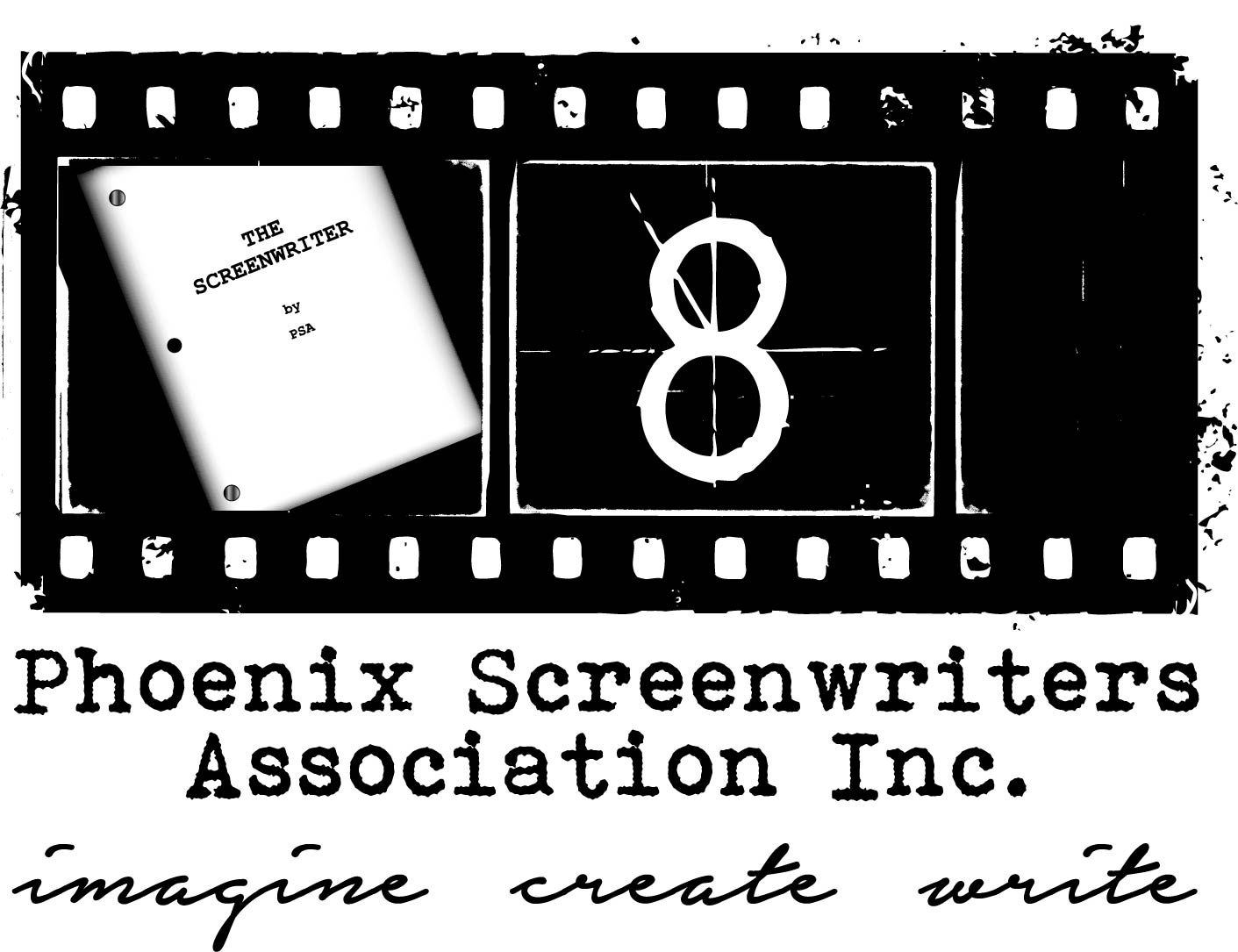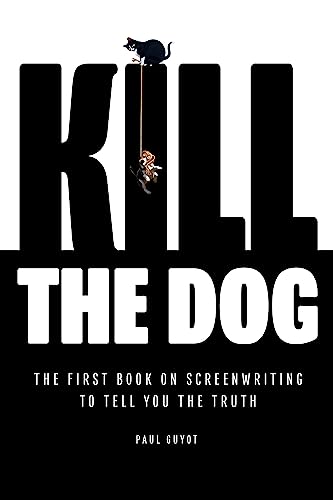Kill the Dog, The First Book on Screenwriting to Tell You the Truth by Paul Guyot (2023)
Review by Beverly Nault with an assist from Jessica Brown
Guyot (gee-yoh) has penned a chart-climbing throwdown aimed at a previous book on screenwriting, Save the Cat!: The Last Book on Screenwriting You’ll Ever Need by the late Blake Snyder. For several pages, Guyot goes toe-to-toe, or paw-to-paw if you will, against what is arguably one of the best-selling books on screenwriting ever published. I was curious as a cat-sorry, couldn’t resist, I’ll stop… and checked the list. At the time of this writing, the Dog was #11 in Screenwriting on Amazon, and the Cat topped it at #6. They’re scratching it out, folks. Last one, I promise! With several versions, including novel writing, writing for TV, and even what’s currently binge-worthy, the Cat franchise thrives.
Guyot unabashedly challenges Snyder’s suppositions in the original Cat book (with no shortage of feline references on his own part) partially due to his observation that Blake had only written a couple of mediocre scripts, and his writing advice is NOT to be taken seriously by aspiring writers. Thus follows several slightly cringey comments, such as, “…the way the Grimalkin book and others like it tell you to write a screenplay is NOT the best way to write one. Or even a good way.” In other words, there is no formula. Write well about interesting characters with a compelling plot. No formula!?
Guyot spends literally pages explaining why he wrote Kill the Dog, who not to follow about writing rules, and what is wrong with the industry that gives credence to non-screenwriters who teach or write about screenwriting. The upshot: “I have no respect, nor should you, for any book, website, podcast, or social media account doling out screenwriting advice if it’s not from a professional screenwriter.”
He’s probably not wrong, but in my opinion, he spent a few too many pages on a semi-rant. Maybe someone needed to hear it, but I was ready for him to move along and tell me his secret.
Okay, there is no secret. It is hard work and practice, practice, practice. And rewrites.
But that’s selling the book short; there really is a lot of wisdom and encouragement, including behind-the-scenes insights into the writer’s room. He says he’s not a comedy writer, but he’s quite amusing, and that made it a fun read as well. See his bio below for examples.
Here are some highlights Jess Brown and I compiled. As Guyot says, YMMV – your mileage may vary.
- Guyot’s chapters on voice, dialogue, process, and writer’s block do contain practical and useful advice. We’ve both read a lot of books on writing and found these chapters worthwhile.
- Fresh ideas, the writing life, and the trades – all topics that are interesting to hear about from a working writer
- Character! – Everything begins and ends with character. Plot does not exist without character.
- The differences and experiences of writing under contract, in a room (for television), and spec
- Rewrites – how to approach, organize and execute
- He calls out the Phoenix Screenwriters Association. Ok, not specifically, but he insists finding a writing group is better than entering contests and paying for coverage when you can find peers who will tell you the truth about your project. Saving you thousands. (Caveat: the top three contests are worthy of submission and feedback, and if you want to see how you rate among others.)
One of my favorite chapters is a glossary of terms or references that have evolved into shorthand expressions, you know, as a family with shared experiences adopt over time. He’d used “man with a hat” in a previous chapter, and the explanation shed (sorry again) light on the meaning. Fun stuff.
Then, at the end, he lists his favorite writing books, many of which we’ve all heard of, but a couple were new to me and look worthy of a future PSA article.
Until then, here’s a bit of encouragement from Paul Guyot; “…craft is not inciting incidents and midpoint turns. It’s language, syntax, turn of phrase, grammar…screenwriting can only be learned by writing. And rewriting.”
It’s not a long read, and you may find some useful nuggets from a working pro. And you’ll know what the buzz is all about between these two opposing viewpoints.
Then let me know if you’re a fan of the kitty, prefer the K9, or if your house is a cat/dog sanctuary allowing both furballs on the couch.
From Amazon:
Paul Guyot is a working professional screenwriter, writing and producing such shows as FELICITY, JUDGING AMY, LEVERAGE, THE LIBRARIANS, NCIS-NEW ORLEANS, and others. He co-wrote the non-blockbuster GEOSTORM, starring Andy Garcia & Gerard Butler. If you spent money to see it, contact Paul and he will refund you.
After seeing thousands of people destroy their chances at a screenwriting career because of the awful advice in all the How-To books, Paul wrote KILL THE DOG: The First Book on Screenwriting to Tell You the Truth. Unlike any screenwriting book to come before, Kill the Dog not only reveals the truth about a professional screenwriting career but exposes the lies of the other books and provides a few life lessons along the way.
Paul has been putting “Screenwriter” on his tax returns every year since 1999 and is still an in-demand television and feature writer. See http://screenwritingtruth.com for more on Paul and his career.

